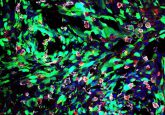The evolving field of intrahepatic cholangiocarcinoma

The study of intrahepatic cholangiocarcinoma (ICC) represents an exciting field with many evolving and potentially controversial topics, including increasing incidence, pathogenesis, improved diagnostic tools, new distinct staging systems, and emerging treatment algorithms. ICC is the second-most common primary hepatic malignancy after hepatocellular cancer (HCC) [1]. Worldwide, the ICC incidence varies widely, with, for example, an incidence of 0.3 per 100,000 people in Canada compared with 80 per 100,000 people in northeast Thailand [2]. Since formally defining ICC in the 1960s, growing evidence suggests the incidence is increasing globally, with some populations demonstrating incremental increases as high as 165% between the 1970s and 2000s [1,3]. The validity of this increasing trend has been questioned with some claiming improvements in diagnostic imaging responsible for creating an artificially elevated trend due to classification or detection bias [3]. Understanding the trend associated with the incidence of ICC is further complicated by evolving classification schemes [3]. Specifically, the WHO International Classification of Disease coding system for ICC is altered every few years. Subsequently, every country’s national cancer registry implements these updated changes at different rates, resulting in potentially inaccurate assessment of the true incidence of ICC [3,4].
Click here to view full article.




